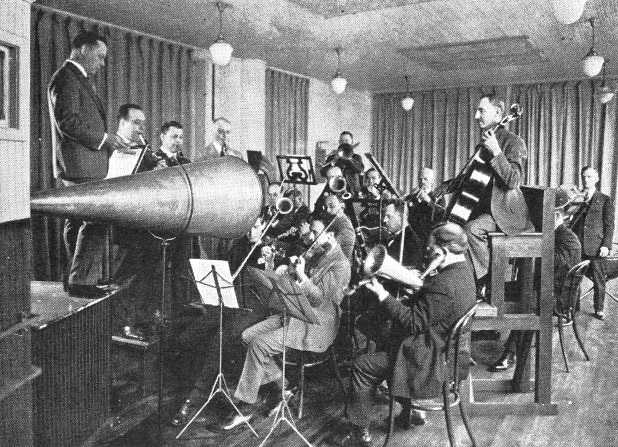The Big Note #14: Playing into The Big Horn – More Recording History!
Last week, we were talking about how technology has changed the way we hear music in the way it the way it is preserved in time and we continue that exploration today. Early recording devices were limited by many factors, including the available technology and this meant certain frequencies could not easily be replicated when played back as well other practical limitations. Despite Alexander Graham Bell patenting the first electric microphone in 1876, the earliest method of recording the sound of a live performance was directly to a recording medium by an entirely mechanical process. This was often called “acoustical recording”. In the standard procedure used until the mid-1920s, the sounds generated by the performance vibrated a diaphragm with a recording stylus connected to it while the stylus cut a groove into a soft recording medium rotating beneath it. To make this process as efficient as possible, the diaphragm was located at the apex of a hollow cone that served to collect and focus the sound with the performers crowded around the other end. We also briefly jump to the present day for a visit and briefly talk about modern synthesis of sounds.
10:36 am: Dance Again by Wamala
10:36 am: Tranquility (for Sidney) by Clariloops
10:36 am: Rose In The Garden by My Cherie
10:36 am: a1 by Luigi and the Giant Waveform from Luigi and the Giant Waveform
10:36 am: G-Spot Tornado by Frank Zappa from Jazz From Hell
10:36 am: Zeroes and Ones (Part Timer Mix) by A Country Practice from Recorded, stored, absorbed, ignored
10:36 am: One Twenty Four AM by All India Radio from Afterworld
10:36 am: Lazy (Live) by David Byrne from American Utopia On Broadway O.S.T.
10:36 am: Yakuza No Uta by Japan Blues from Sells His Record Collection
